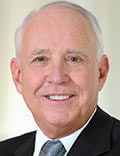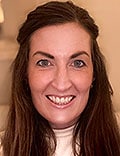Doctors With Anxiety Disorders Say Break Silence, Get Help
Be sure to scroll down after this story to find links to extensive Medscape Medical News coverage addressing mental health and medical professionals.
The nightmares started in his second quarter of medical school.

Darrell Kirch, MD, had struggled with anxiety since early childhood but this was another level. He was feeling burned out while studying anatomy in the cadaver lab. The combination brought jarring anxiety dreams. “It was brutal,” he said. “I started having nightmares about our cadaver coming alive and chasing me.”
Kirch made it through the quarter. But during the next break, he experienced a massive panic attack. Not just a few minutes of heart-pounding fear, it persisted for days. Kirch thought he was dying. Finally, he realized he was overmatched by the demands of medical school.
When classes resumed, Kirch told the dean he needed to drop out. The dean listened but ultimately — and compassionately — refused his request.
“Why?” Kirch asked.
“I think we can help you,” he said.
Is Anxiety in Healthcare ‘Normal?’
Anxiety disorders are the most common mental health disorders in the world. According to the National Alliance on Mental Health, 19.1% of adults in the United States have an anxiety disorder. The prevalence among healthcare professionals is even higher. One study using data from 2021 and published in the Journal of Affective Disorders found rates as high as 31.0% for physicians and 53.3% for nurses.
Several studies noted a significant increase in physician anxiety symptoms during the COVID-19 pandemic, including a survey published in BMC Psychology.
More recently, a 2024 study on post-COVID anxiety published in the Archives of Psychiatry and Mental Health found that 21.6% of physician participants had mild anxiety, 10.3% had moderate anxiety, and 12.9% had severe anxiety. There was a higher risk among female physicians, general practitioners, those with a family history of anxiety, and those who worked night shifts.
The study concluded that the rate of anxiety disorders among physicians had returned to “normal” since the pandemic. But should we consider the status quo normal?
Today, much of the conversation surrounding physicians’ mental health focuses on rising rates of burnout. But burnout and anxiety are often intertwined: Situational anxiety can lead to burnout, while burnout can lead to more severe anxiety. Without recognizing and addressing these relationships, physicians’ anxiety disorders can reach debilitating levels.
“Burnout and anxiety are overlapping circles,” Kirch said. “I had a mental disorder, got into med school, became burned out, and had that massive panic attack.” It was a cycle of triggers that Kirch couldn’t escape.
Trauma and Triggers

Cardiologist Jonathan Fisher, MD, is familiar with unavoidable triggers. He described a recent incident at work where he needed to steady himself, notice his breath, and focus on releasing tension from his body caused by a flood of traumatic memories. Why? A 21-year-old patient had come into his emergency room with ventricular tachycardia.
Alarmed by this patient’s young age, Fisher was reminded of a terrible day in residency when he was tasked with helping to resuscitate another young man’s stopped heart. That patient didn’t survive.
“Those memories always live with us, and they change us,” said Fisher, who has learned to manage his anxiety issues. “That early experience of having the young person die unexpectedly is something that informs my practice to this day, even 25 years later.”
While difficult cases can linger for many physicians, those with anxiety and panic disorders tend to experience these effects as persistent and severe, threatening their confidence.

While working as a junior doctor with the National Health Service in Bristol, England, Karen Wallace, MD, received a disturbing phone call. She was being summoned to a coroner’s court for an inquest into a patient’s death. That night, Wallace woke up, sweating and breathless with a thumping heart and racing thoughts. It was her first panic attack. From then on, like clockwork at 2 AM for 3 years, Wallace would wake up riddled with self-doubt and self-blame.
“I woke up making up patients that I had never seen, thinking that I had prescribed the wrong drug, or I’d missed something when examining a patient,” she said. “I was working 12-hour days and then working all night with my brain, doing fake clinics through my anxiety.”
Following difficult patient cases, many doctors struggle with self-blame. “There’s this feeling like maybe they should have been able to prevent things, even if realistically and rationally that wasn’t possible,” said Shin Ock, PhD, a Washington, DC–based clinical psychologist who specializes in therapy for physicians and executives.
“Oftentimes [in therapy sessions], we’re working on not letting those difficult experiences define physicians’ future experiences or lead to further avoidance, because I think that’s mostly where the anxiety can start getting in the way of practice,” Ock explained.
Hiding the Panic
In medical school and residency, no one guessed that Fisher suffered from anxiety. He was very good at hiding it. He leaned into the stereotypical overachiever doctor persona, seeing his struggles as sacrifices in the service of others.
In the early years of his practice, Fisher dealt with sleepless nights, headaches, and stiff muscles. He started feeling a sense of dread before going to work in the morning. Then the dread started on Sundays, knowing he was going back to work the next day. Before long, he was spending the whole weekend in that state.
Meanwhile, Fisher was seeing patients with anxiety-related heart symptoms that he had experienced himself, including palpitations, rising blood pressure, and chest tightness often worsened by emergency situations, a heavy workload, or insufficient sleep.
The dread of going to work mounted until Fisher felt unable to function. He knew he needed help but felt reluctant to seek it. “That resistance is something that I see in a lot of colleagues today,” he said. “There’s a fear that if others find out that a physician needs help with their own mental health, then maybe they can no longer be trusted to care for others.”
Wallace’s anxiety also went unnoticed by her colleagues, who thought of her as “happy-go-lucky,” until a receptionist walked in on her having a panic attack after a difficult morning clinic. Wallace was sent home, leaving her colleagues surprised by how severe her anxiety really was.
Also attempting to keep his anxiety and panic hidden, Kirch never told his classmates, colleagues, or family members until his fateful visit to the dean’s office. “Why? There’s a one-word answer: Stigma,” he said.
Solutions and Strategies
When physicians receive treatment for anxiety, the results can be dramatic.
That dean referred Kirch to a psychiatrist and after being treated for generalized anxiety disorder, Kirch graduated near the top of his class and went on to become a psychiatrist and clinical neuroscientist. From 2006 to 2019, he served as the president and CEO of the Association of American Medical Colleges (AAMC). He has received 11 honorary doctoral degrees and the Outstanding Service Medal of the US Public Health Service for his leadership and contributions to the field.
Kirch takes antidepressants for his anxiety, along with short-term benzodiazepine to manage panic attacks as needed. But he has treated many physicians who have been reluctant to take psychiatric medications, which he suspects is due to stigma.
Along with medications, Kirch makes use of cognitive strategies to keep his anxiety and panic at bay. He does meditative breathing exercises. He “rides the wave” of his anxiety rather than resisting it. And he uses self-talk to bring himself back to reality. “If I’m feeling anxious, I remind myself that this is my fight-or-flight syndrome acting up at an inappropriate time,” he said. “There is no saber-tooth tiger sneaking up behind me, no foe waiting in the wings to kill me. It is simply my evolutionary biology acting up.”
Despite Fisher’s initial resistance to seeking help, he has since built a “personal toolbox” of skills to manage his anxiety, including what he calls “outer work:” Support from others, and “inner work,” including mindfulness and strategies from cognitive behavioral therapy, which involve observing thoughts and feelings rather than identifying with them.
“I don’t suffer from anxiety anymore,” Fisher said. “There’s a difference between experiencing something and suffering from it. I now have a healthier relationship to worrying thoughts. I honor them, I listen to them, and I address them, and I put them away.”
Through medication, talk therapy, meditation, lifestyle changes, or a combination, the right treatment can help physicians to feel more in control of their minds and their careers. For some, though, therapeutic measures are not enough.
After many sleepless nights and panic attacks, Wallace’s coroner’s inquest concluded that there was nothing else she could have done to prevent the patient’s death.The patient’s family thanked Wallace for her care.
But a year later, her anxiety was still lingering, leading her to seek help. She tried online cognitive behavioral therapy, counseling, and mindfulness. “None of it really took away that trigger of the responsibility that I felt and the risk if something went wrong,” she said. “My anxiety couldn’t handle it.”
The only thing that helped Wallace was pivoting in her career. She switched from her work as a general practitioner to focus on disability medicine and occupational health. Wallace still marks that initial phone call about the inquest as the moment she lost the joy in her practice.
‘Two Words: Reach Out’

When asked for the #1 piece of advice they would give to healthcare professionals suffering from anxiety, Kirch, Fisher, Wallace, and Ock all gave some variation of the same advice: Talk about it, even if your voice shakes.
During the COVID-19 pandemic, Wallace shared her story through her article “A Doctor’s Duty,” published in InnovAiT. To this day, people from all over the world reach out to tell her they feel the same way, and often that they are suffering in silence and isolation.
Ock said this is crucial. “If you can be the brave person to say ‘me too,’ or if you can reach out to a professional or a colleague or anyone, it’s going to help you feel less powerless, less isolated, and less like you have to live up to some sort of perceived expectation.”
Fisher also prioritizes sharing his experience with healthcare professionals and patients alike. A healthcare executive and keynote speaker, he has written a guide for patients and doctors struggling with anxiety and depression called Just One Heart: A Cardiologist’s Guide to Health, Healing, and Happiness.
It was decades into Kirch’s career before he decided to open up about his struggles. He shared his story with AAMC News and wrote an article for Academic Medicine titled “Physician Mental Health: My Personal Journey and Professional Plea.” This past March, he told his story at a national, thousand-person annual meeting of residency directors.
“If you suffer from anxiety, do what that dean helped me do: Get proper help,” Kirch said. “You can thrive, and you will be a better doctor for it. The more open we are, the better care we’ll take of ourselves and the better care we’ll take of our colleagues. Two words: Reach out.”
Read more about the mental health challenges and solutions for medical professionals:
How These MDs Conquered Imposter Syndrome
How Physicians with Addiction Heal and Return to Practice
How a Mindset Shift Can Transform the Way You Practice
Med Student Mental Health: Why Future Healers are Hurting
Why Postpartum Depression Hits Physician Moms at High Rates
‘I Feel Alone’: Why Loneliness is Now Common Among Doctors
Why Do MDs Have Such a High Rate of Eating Disorders?
Why ‘Resilience’ Can Be a Loaded Term for Healthcare Workers


 Admin_Adham
Admin_Adham


